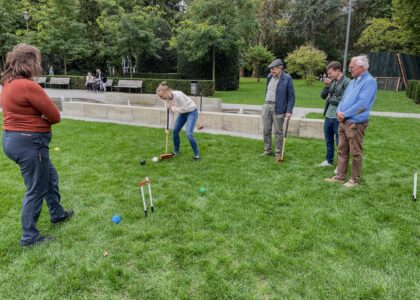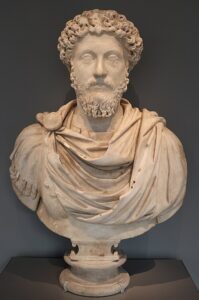
On Saturday 4 October a group of alumni from the Cambridge and Oxford Societies and their guests visited the important state exhibition devoted to Marcus Aurelius, Roman Emperor from 161 to 180 and Stoic philosopher. The exhibition was spread over two museums, the main part covering the life and times of Marcus Aurelius was in the magnificent Rheinlandisches Landesmuseum while the part in the Stadtmuseum Simeonstift focused on “What is Good Governance?”
The Rheinisches Landesmuseum took us on a journey back in time to the Roman Empire of the 2nd century, addressing the fascination surrounding Marcus Aurelius. The archaeological exhibition presented a chronological tour of discovery through the multifaceted life and times of this Roman emperor.
The life of Marcus Aurelius was marked by contrasts: while his long years as heir to the throne were largely peaceful, his reign as emperor was marked by bitter conflicts and campaigns. Above all, however, his love of philosophy and his “Meditations” make him the exception of antiquity and distinguish him from other rulers of his time. In the Landesmuseum, several hundred valuable top exhibits from numerous European museums illustrate the stages of the life of Marcus Aurelius and bring the time of his reign to life.
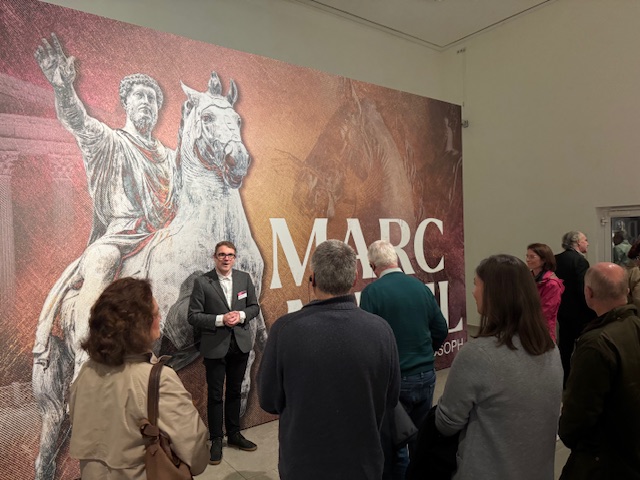
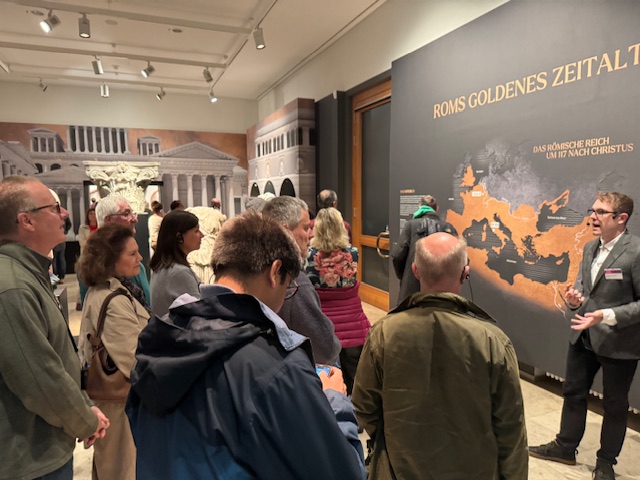
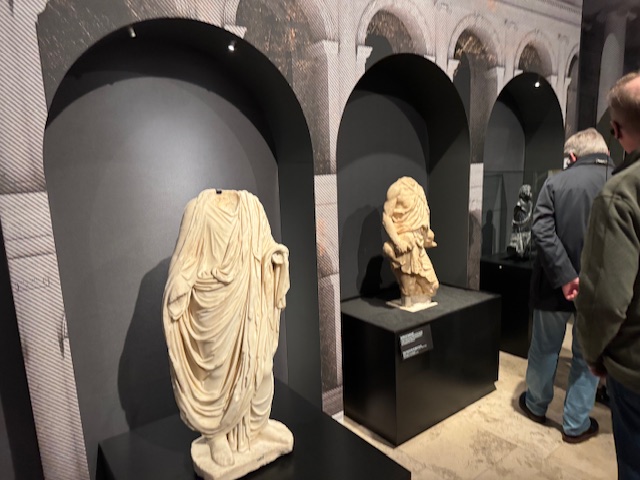
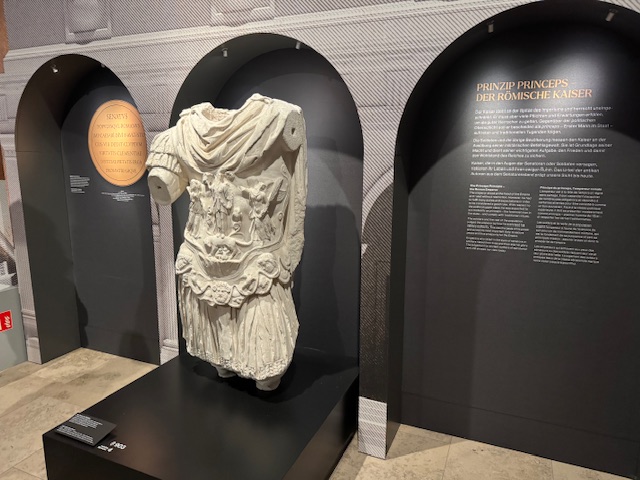
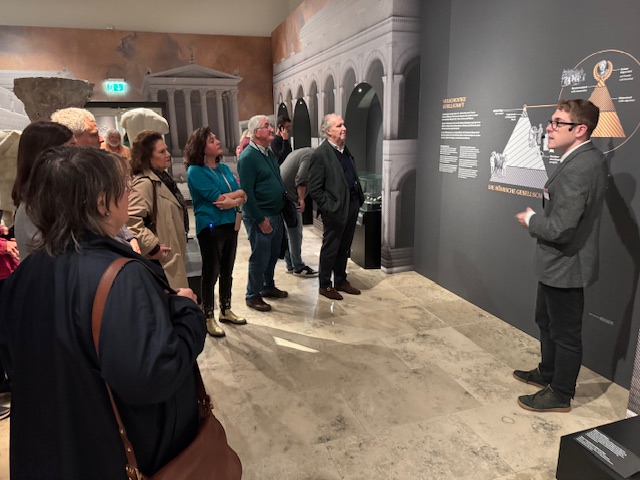
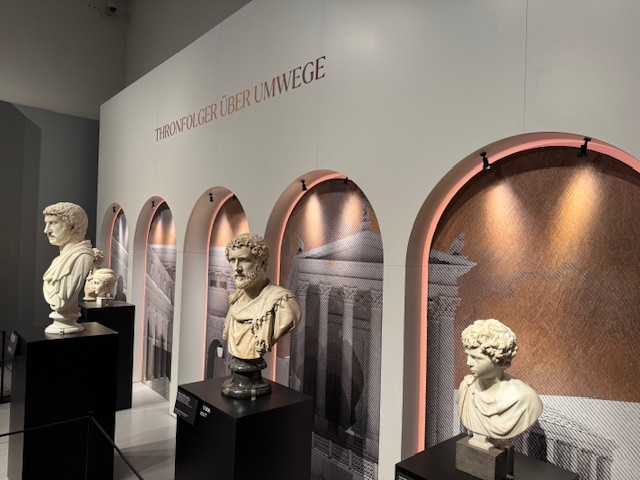
Our excellent and extremely knowledgeable guide Marc, a student at Trier University provided fascinating and very clear explanations of the different stages of Marcus Aurelius’s life and career and the people around him, such as the Emperor Hadrian, his adoptive father Antoninus who followed Hadrian as Emperor, his adoptive brother Lucius Verus, with whom he ruled jointly as Emperor after the death of Antoninus until Lucius Verus’s death in 169, and his wife Faustina.
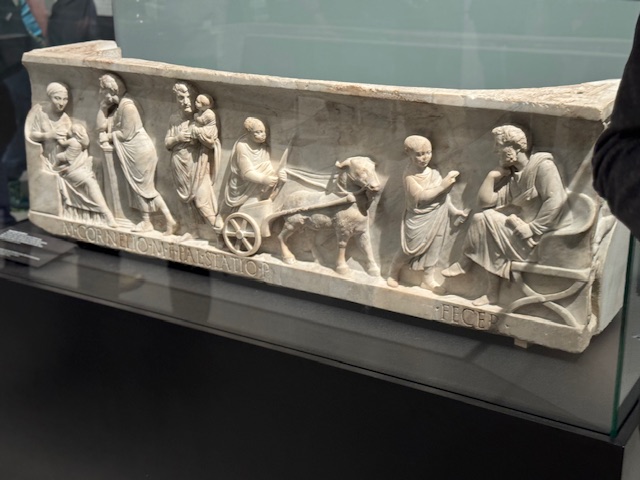
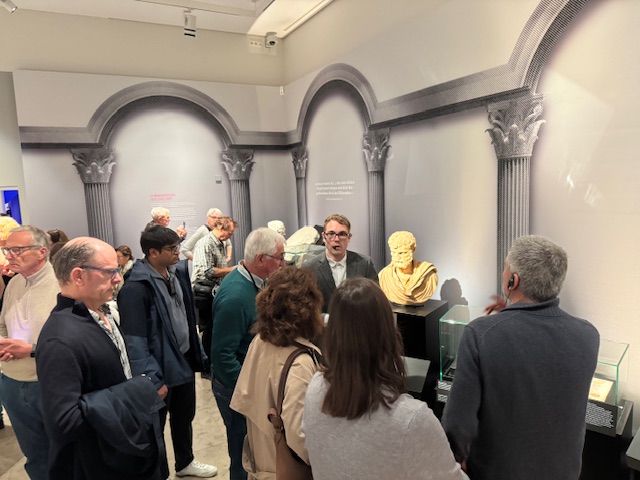
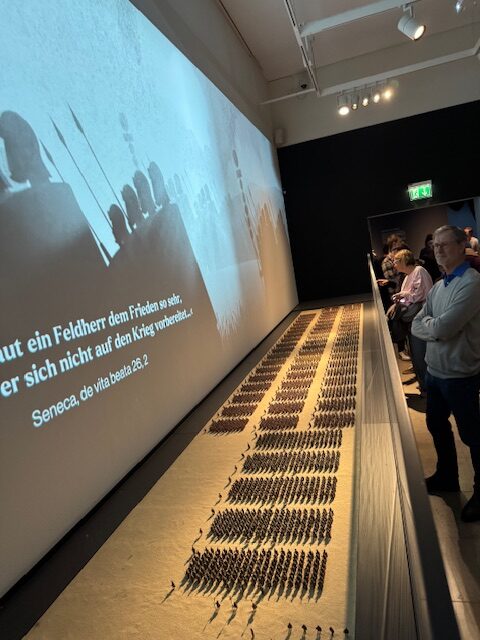
After we completed our visit at the Rheinlandisches Landesmuseum a few members of the group continued to the Stadtmuseum Simeonstift adjoining the Porta Nigra and enjoyed a self-guided tour of the “What is Good Governance?” exhibition. For centuries, Marcus Aurelius and his “Meditations” have attracted interest not only from rulers, but also from political philosophers, moral philosophers, and artists.
The exhibition displays high quality loans from exceptional museums all over Europe to demonstrate how artistic representations of “good governance” have changed over the course of history. When is a period of rule considered good and just and what resonance did these ideas have in art?
The exhibition traces this struggle for good government over eight centuries. The paintings, sculptures, caricatures, photographs and film clips shed light on this question as a fascinating constant in human history. The English audio-guide provided excellent analyses of the allegories of the themes of good and bad governance in the many paintings in the exhibition, without which it would have been difficult to understand the relevance of the paintings to the theme of the exhibition.
The exhibition includes a number of panels with quotations from personalities and politicians over the centuries admiring Marcus Aurelius’ “Meditations”: with the interesting comment from the historian Mary Beard “….. some of the modern admirers of the gentle philosopher-emperor Marcus Aurelius would be less admiring if they reflected on the brutality of his suppression of the Germans, proudly illustrated in the scenes of battle that circle their way up his commemorative column that still stands in the centre of Rome”! (SPQR, 2015).
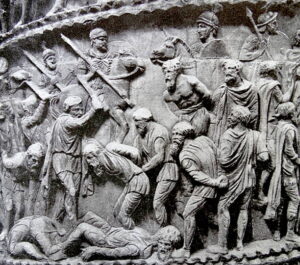
This exhibition on Marcus Aurelius in the two museums follows the huge success of the exhibitions on Constantine the Great (2007), Nero (2016) and the Fall of the Roman Empire (2022). The current exhibition is also enjoying great success, which augurs well for future exhibitions in the coming years.
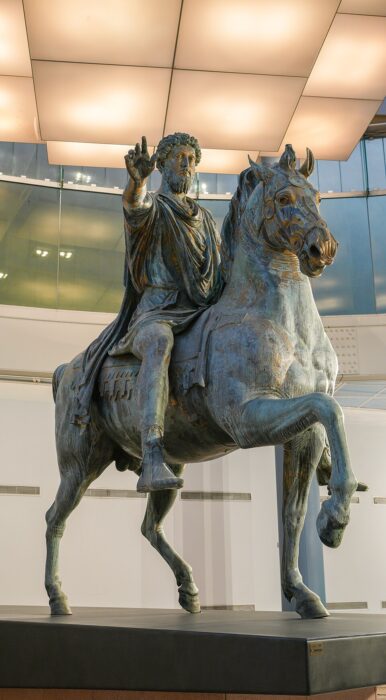
The group participating in this event was smaller than we had hoped, which was a pity given the exceptional nature of the exhibition. If you have not already visited the exhibition it is probably too late as our information is that it is already sold out, I’m afraid!!



